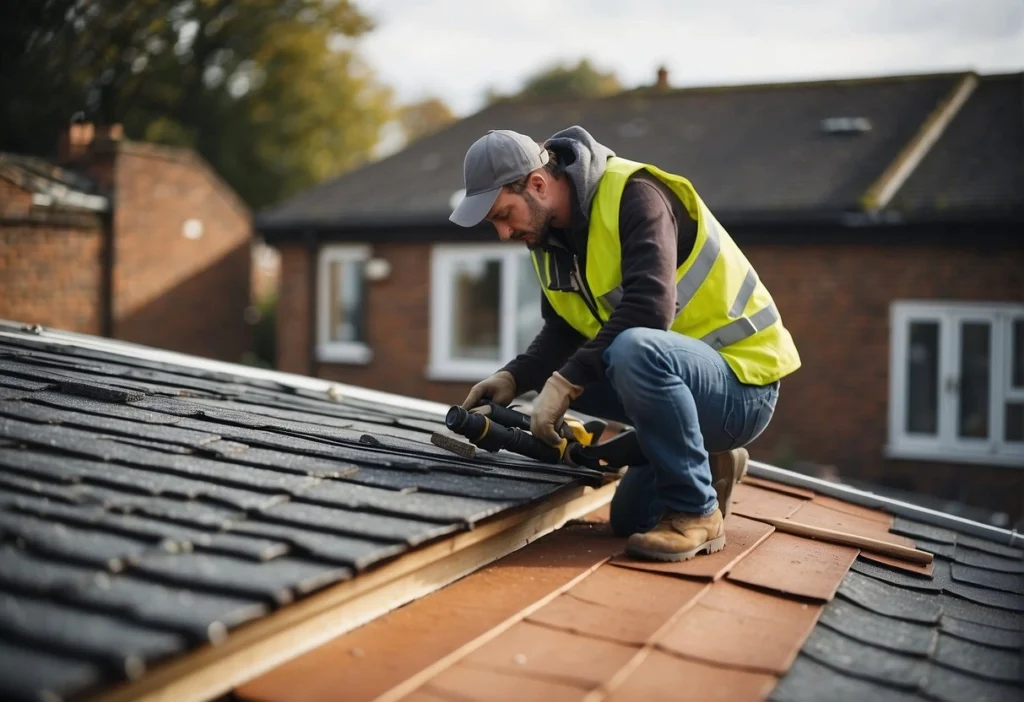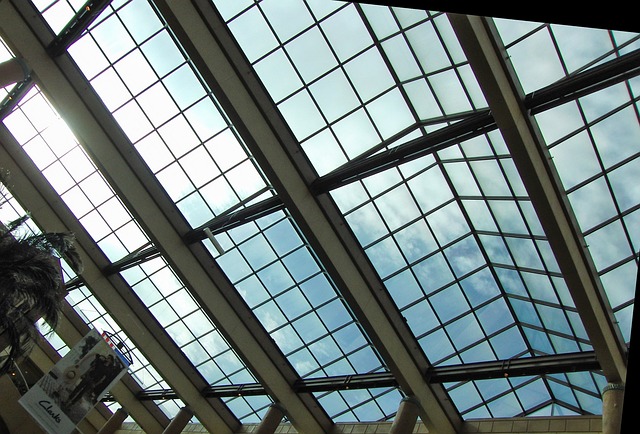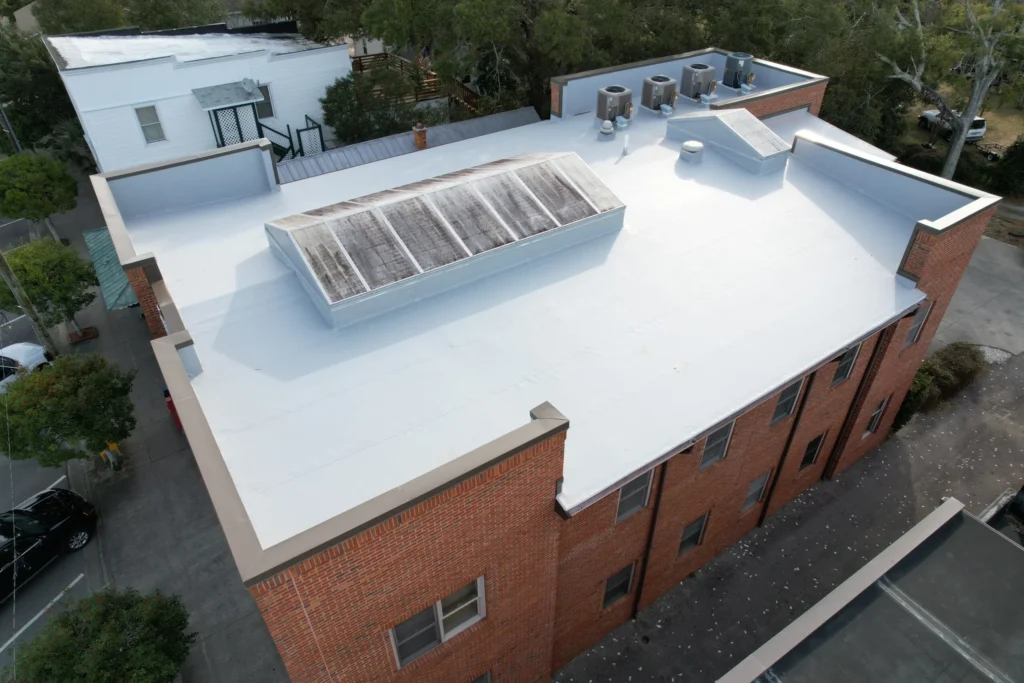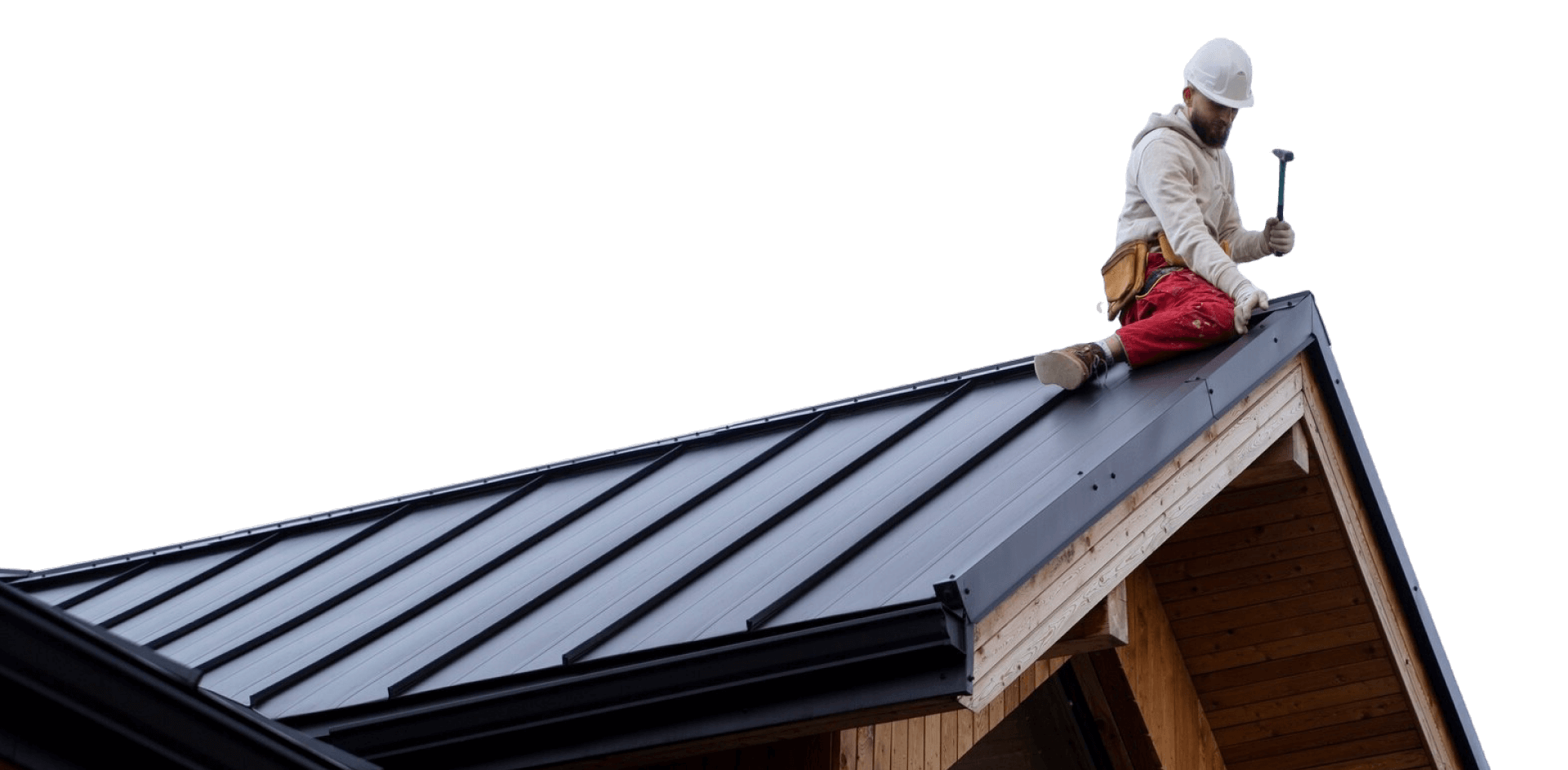Flat roofs are a common feature of commercial buildings, and for good reason. While most residential buildings feature sloped roofs designed to handle rain and snow runoff, larger commercial structures benefit from the practicality, cost-effectiveness, and functional design that flat roofs offer. Whether you’re building a new commercial property or looking to replace your current roof, understanding the reasons why flat roofs are so popular can help you make a more informed decision.
In this article, we’ll explore “Why Are Flat Roofs Common on Larger Commercial Buildings,” the key reasons why flat roofs are commonly used on large commercial buildings, and provide insight into their benefits. We will also answer some common questions, such as what the best roof for a commercial building is and why flat roofs are a better option than slanted ones.
Why Are Flat Roofs Common?

Flat roofs are often the go-to option for larger commercial buildings due to their numerous benefits. These roofs are not entirely flat but typically feature a slight pitch to allow for water drainage. This design, along with the variety of materials available, makes flat roofs an excellent choice for commercial applications.
Cost-Effectiveness of Flat Roofs
Lower Construction Costs
One of the primary reasons flat roofs are so commonly used in commercial buildings is because they are cost-effective. Flat roofs require fewer materials than sloped roofs, which leads to a reduction in both material and labor costs. The architecture of a slanted roof is more complex and requires additional framing and materials to support the slope, which adds to the cost.
For large commercial buildings, which often have expansive rooftop areas, these savings quickly add up. The lower costs of installation and construction make flat roofs a budget-friendly choice for businesses looking to maximize their investment in commercial property.
Budget-Friendly Option for Large Buildings
Commercial buildings are typically larger than residential structures, and the size of the roof area is a significant factor in roofing costs. A slanted roof would require a high pitch and additional materials, making the cost exponentially higher as the building’s size increases. Flat roofs, on the other hand, can be easily scaled to accommodate the size of the building without a dramatic increase in cost.
This budget-friendly feature is especially valuable for businesses that need to balance construction costs with long-term financial goals. Flat roofs provide a cost-effective option for businesses, whether they are building a new property or retrofitting an existing one.
Maximized Usable Rooftop Space
Large, Uninterrupted Surface Area
Another significant advantage of flat roofs is the vast, uninterrupted surface area they provide. This space can be used for a variety of purposes, including housing essential equipment like HVAC systems, solar panels, or even outdoor terraces and storage. The flat, stable surface makes it easy to place and maintain large equipment, which would be challenging to do on a sloped roof.
For businesses, having ample space on the roof offers a major advantage in terms of functionality. Rooftop HVAC units, which are essential for maintaining the interior climate of a commercial building, can be housed on flat roofs without taking up valuable interior space. The ability to place this equipment outside saves valuable space for other uses inside the building, such as offices, manufacturing spaces, or showrooms.
Versatility in Roof Usage
The large, flat expanse also allows for additional uses, such as rooftop gardens, recreational areas, or storage for equipment. This is particularly important for businesses that need to maximize every square foot of their commercial property. Whether it’s adding solar panels to reduce energy costs or creating an outdoor space for employees, the flat roof can serve multiple purposes that help improve the efficiency and functionality of the building.
The flat design also simplifies the installation of these features, which might be difficult or impossible to implement on a sloped roof.
Efficient Drainage Design
Proper Drainage Systems
Despite the name, flat roofs are not entirely flat. They are typically designed with a slight slope to ensure water can drain effectively. When properly designed, flat roofs can incorporate highly efficient drainage systems to handle large amounts of rainwater and prevent pooling or water damage.
Flat roofs are equipped with drainage features, such as scuppers, drains, and gutters, that channel water off the roof. This ensures that water doesn’t accumulate and cause leaks, which can be a significant issue for flat roofs if not maintained correctly. With the proper drainage system in place, flat roofs can manage large amounts of rainwater with ease, making them a reliable option for commercial buildings.
Importance for Large Buildings
For larger buildings, efficient drainage is crucial. Commercial buildings tend to have expansive roof areas, meaning that if water isn’t properly directed, it can create significant problems. Flat roofs are designed to accommodate these large surfaces, making them ideal for managing the drainage needs of larger commercial structures.
Easier Maintenance and Access
Simpler Inspection and Repairs
Maintaining a commercial roof is crucial for its longevity and the safety of the building’s occupants. Flat roofs are much easier to access than sloped roofs, which require ladders and more complicated procedures for inspection and maintenance. With a flat roof, maintenance personnel can easily walk across the roof, perform inspections, and make necessary repairs without risking their safety or the integrity of the roof structure.
This ease of access is particularly important for businesses with large buildings, where regular roof inspections are necessary to prevent issues such as leaks or water damage. Having a flat roof simplifies the entire maintenance process, making it faster, safer, and more efficient.
Accessibility for Large Roof Areas
In large commercial buildings, the roof can span a vast area, making maintenance and access even more critical. Flat roofs offer a safe and simple solution for accessing these large spaces. Maintenance professionals can easily navigate the roof, perform routine checks, and quickly address any issues that arise, which helps to extend the lifespan of the roof and avoid costly repairs in the future.
What is the Most Common Type of Commercial Roof?
The most common type of roof used in commercial buildings is the flat roof, followed closely by low-slope roofs. Flat roofs dominate the commercial industry because they offer a cost-effective, practical solution for large buildings. Additionally, flat roofs are versatile, easy to maintain, and provide ample space for equipment and other uses.
While other types of commercial roofs, such as pitched or sloped roofs, may be used in specific industries or for particular architectural designs, flat roofs remain the preferred choice due to their benefits in terms of cost, space utilization, and ease of maintenance.
Why Don’t Commercial Buildings Have Slanted Roofs?
Slanted roofs, while common in residential construction, are less practical for commercial buildings. The primary reason for this is the size of commercial buildings. A slanted roof would require a higher pitch to cover a larger area, which would significantly increase construction costs and complicate the design. Additionally, slanted roofs take up valuable space inside the building, which is especially problematic for commercial structures that need to maximize every inch of usable space.
Sloped roofs also pose challenges when it comes to maintenance. The angle of the roof makes it more difficult for maintenance personnel to access and inspect, potentially creating safety hazards and complicating repairs. This is why flat roofs are preferred for commercial buildings, as they eliminate these issues and provide a more cost-effective, functional solution.
What is the Best Roof for a Commercial Building?
The best roof for a commercial building depends on the specific needs of the business. However, flat roofs are often the best option due to their cost-effectiveness, easy maintenance, and versatile usage. Flat roofs can be designed with efficient drainage systems, and they provide ample space for HVAC units, solar panels, and other essential equipment.
While other roof types may be suitable for specific applications, flat roofs are generally the most practical and budget-friendly choice for large commercial buildings. They offer the best balance of functionality, durability, and cost savings, making them the ideal roofing solution for most commercial properties.

Conclusion
Flat roofs are the preferred choice for commercial buildings due to their cost-effectiveness, maximized rooftop space, efficient drainage capabilities, and ease of maintenance. Whether you’re looking to build a new commercial property or replace your current roof, a flat roof offers numerous advantages that make it the ideal option for most businesses.
If you’re considering installing or maintaining a flat roof on your commercial property, Proper Roofing Ltd. is here to help. Contact us today for all your Vancouver Roofing needs, and let us provide you with the expertise and services you need to ensure a durable, cost-effective roof for your business.
Check out our social media pages below:
Check out some of our blogs to help your Roofing needs:


